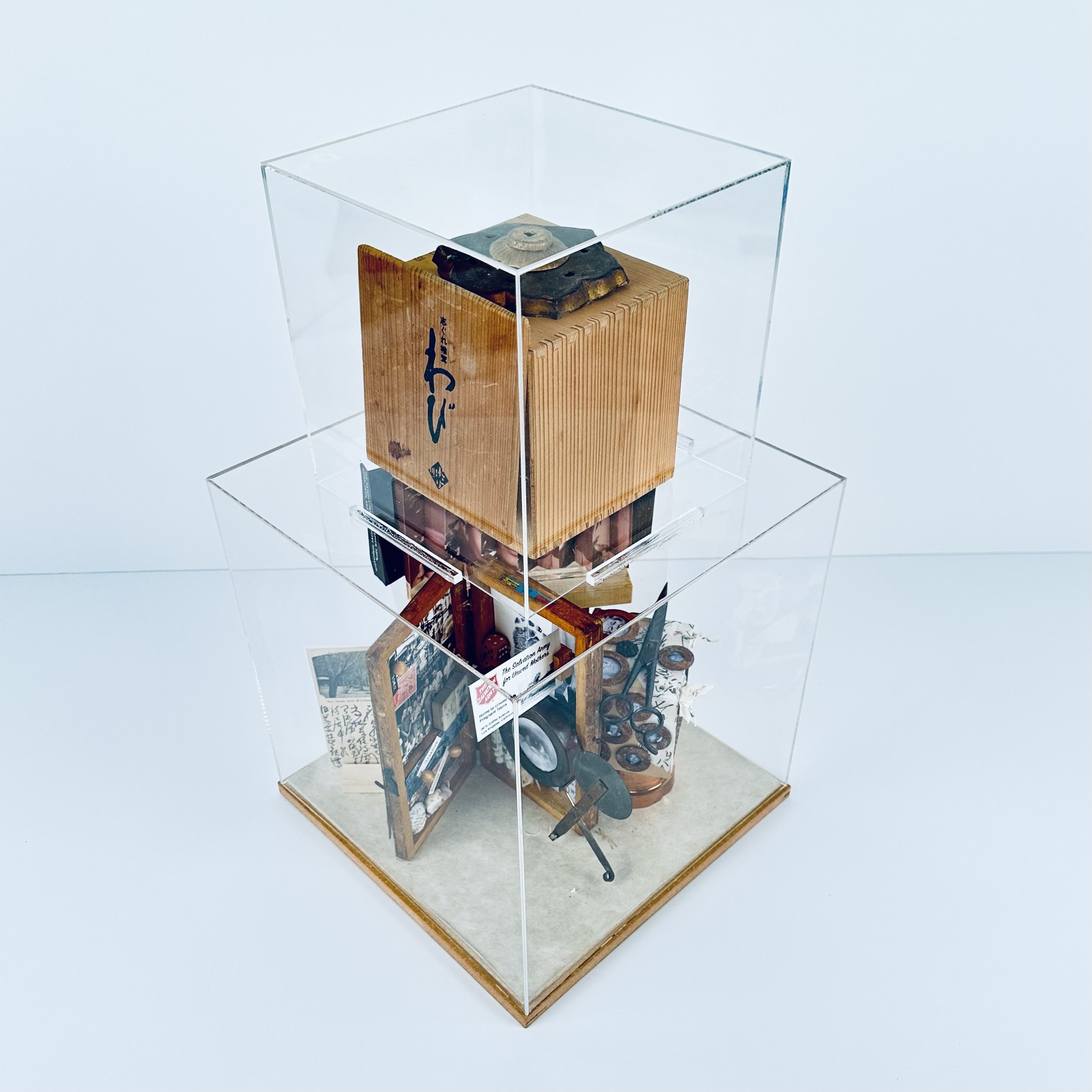
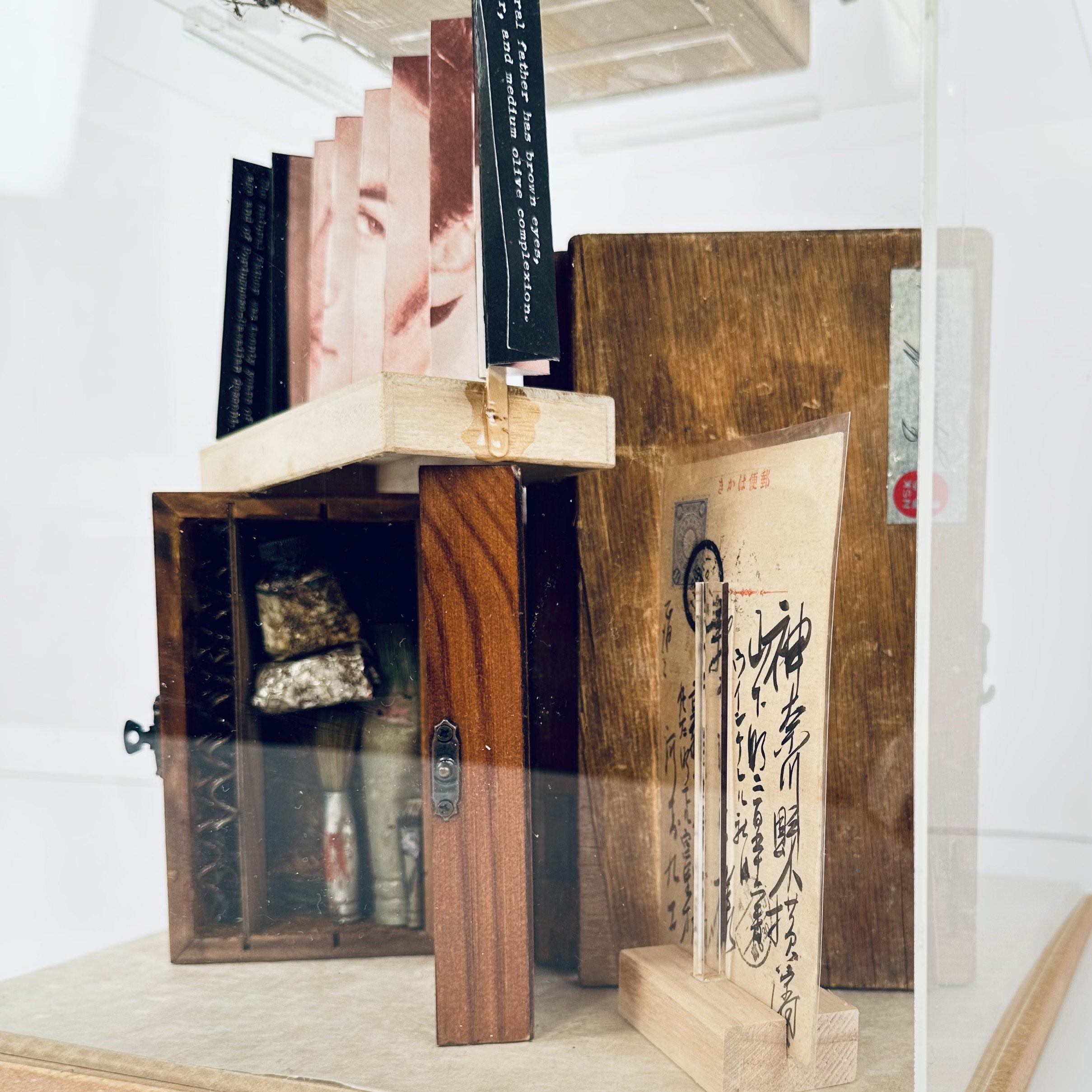
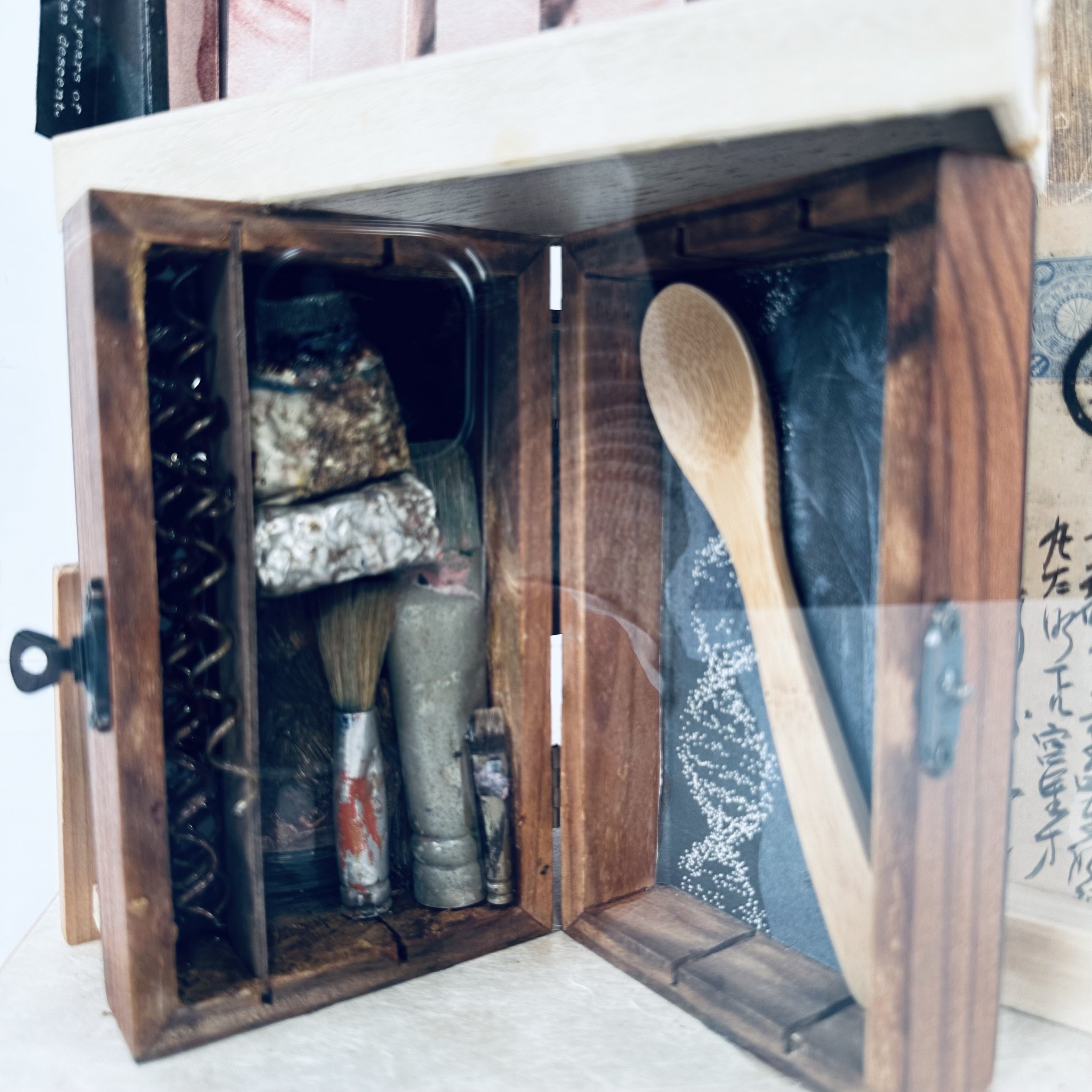
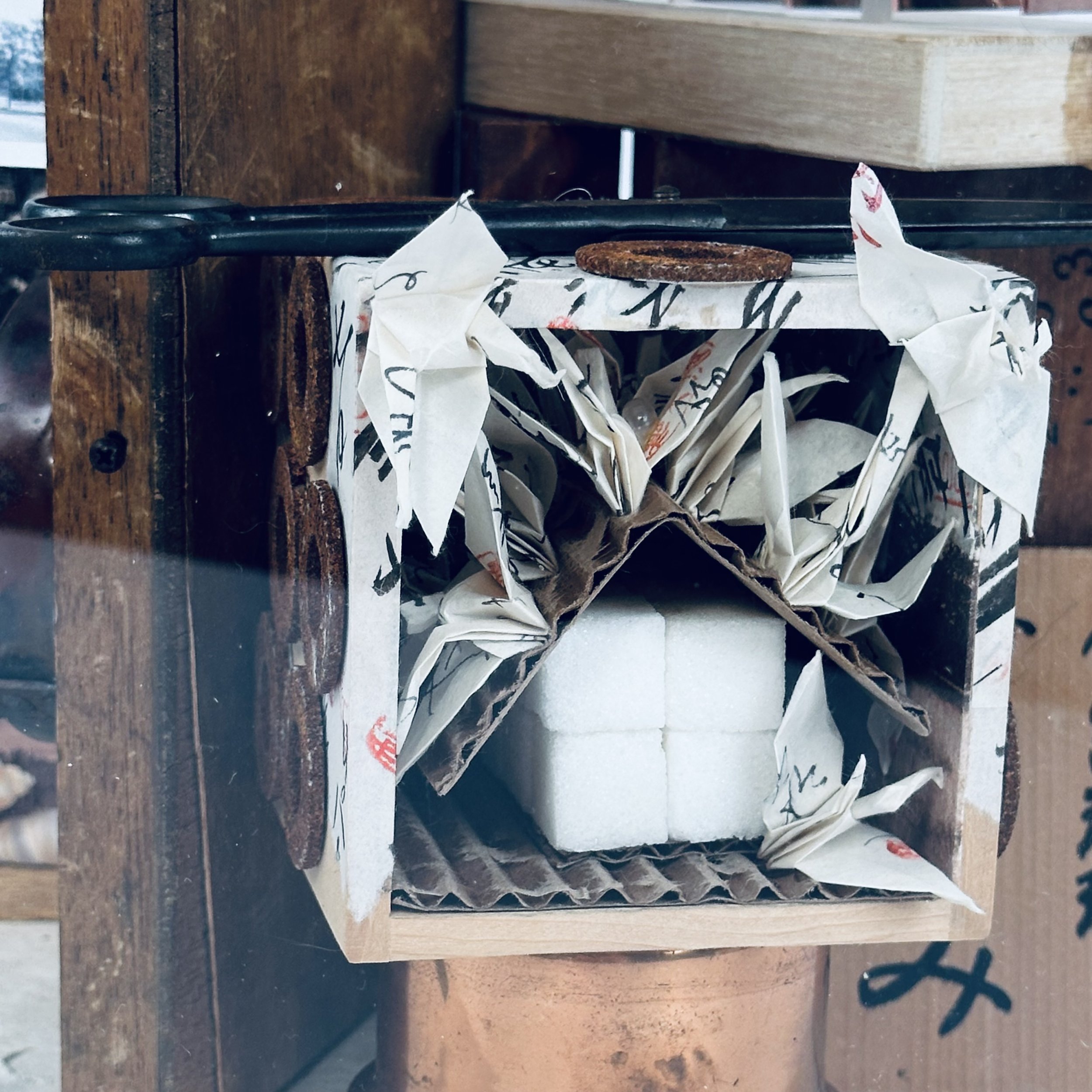
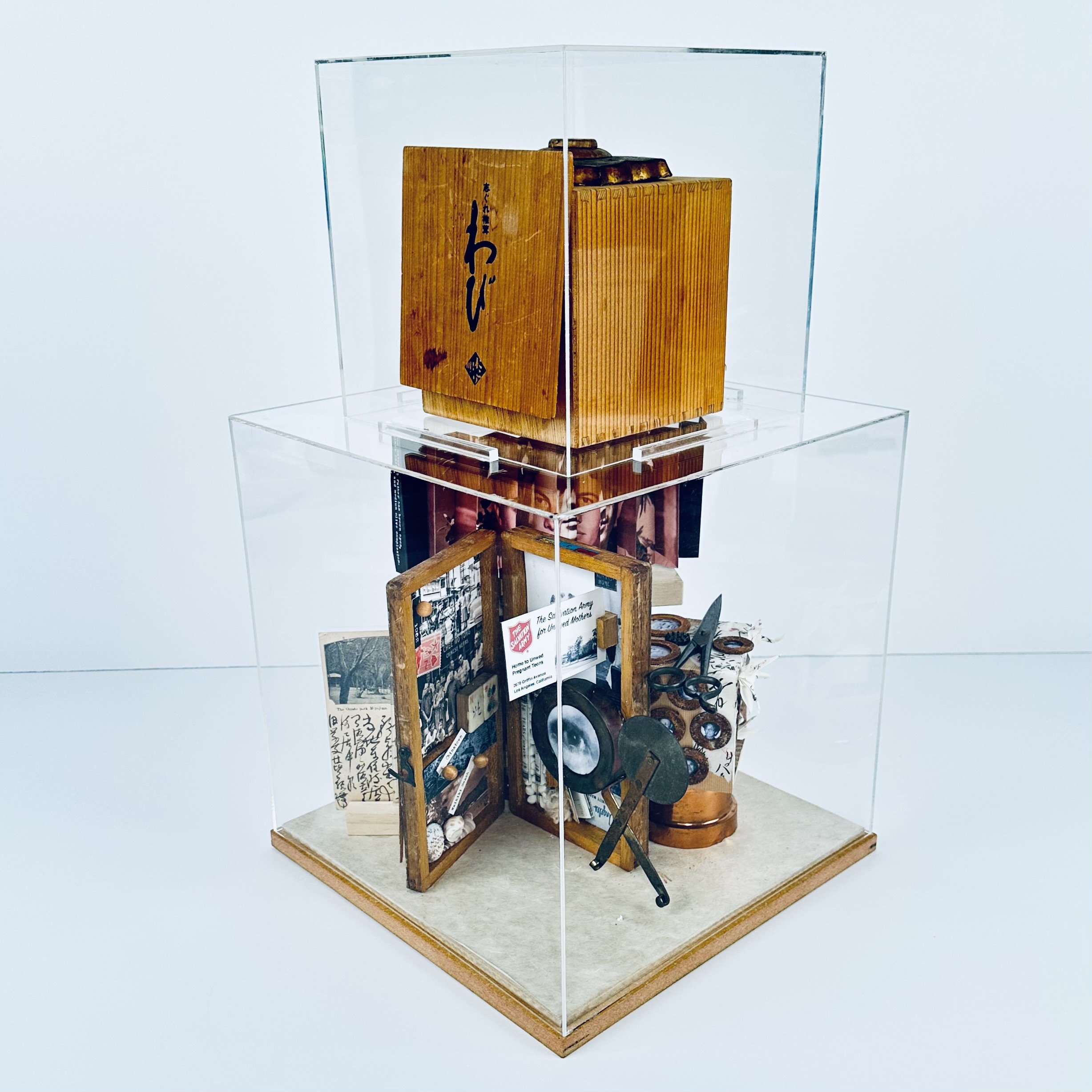
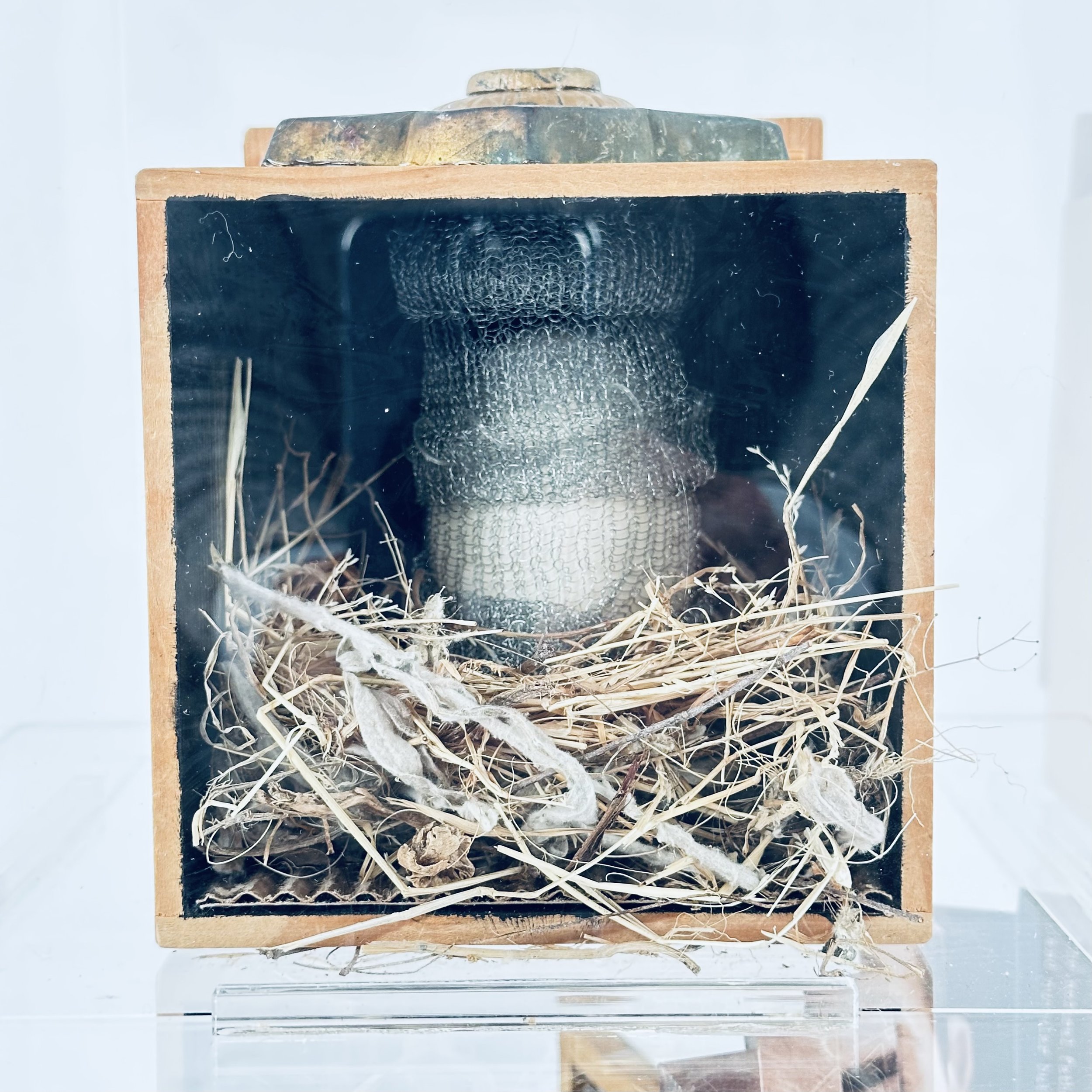
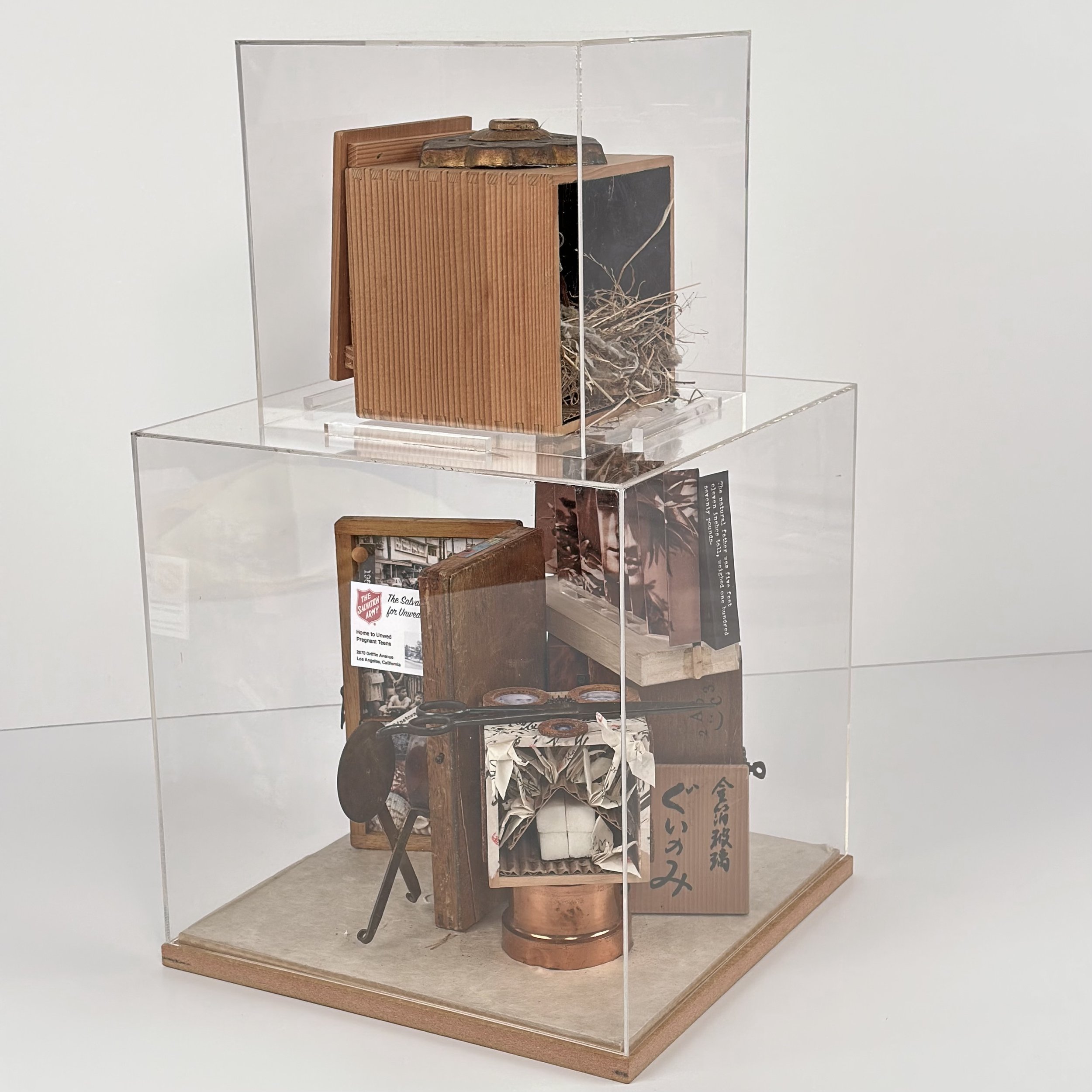
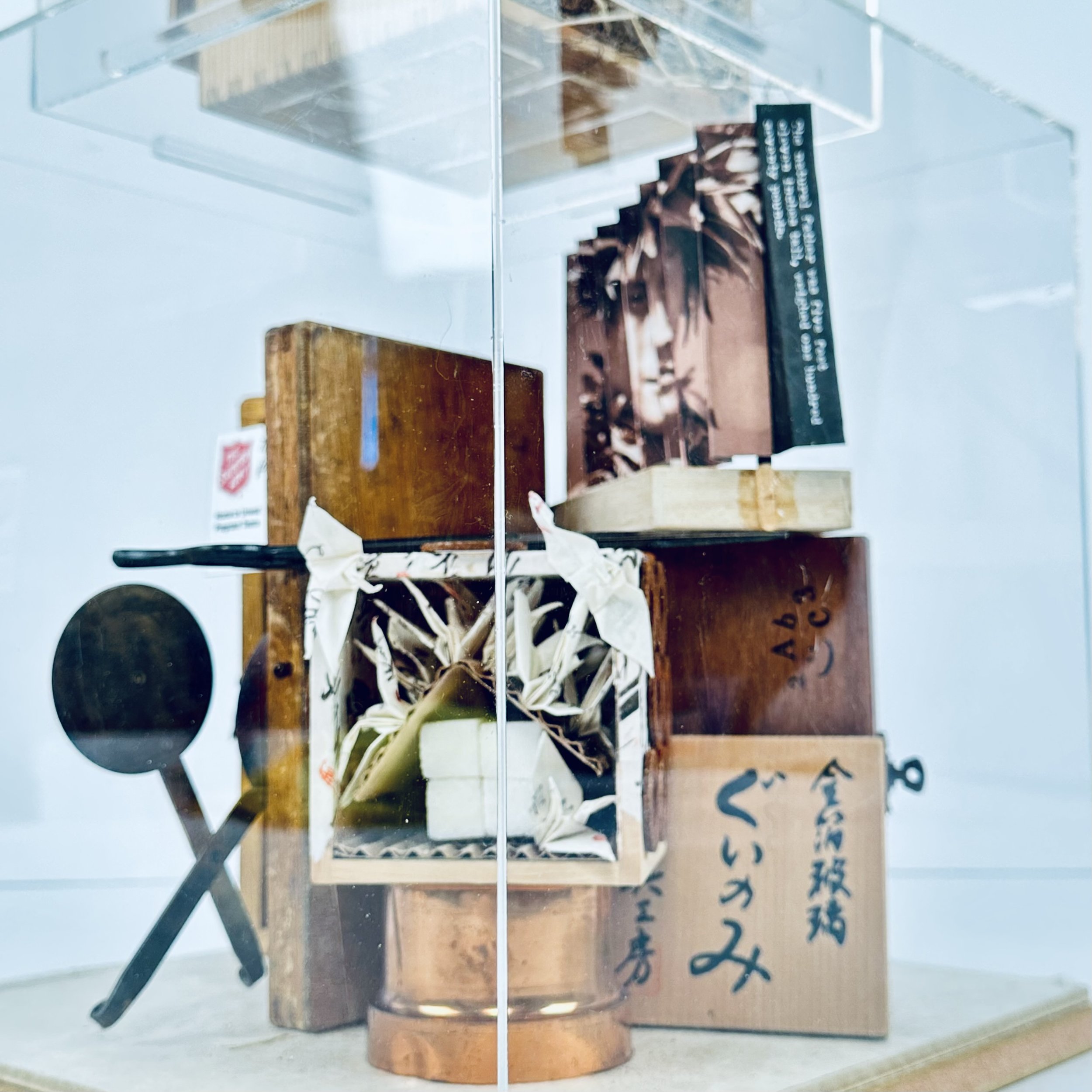
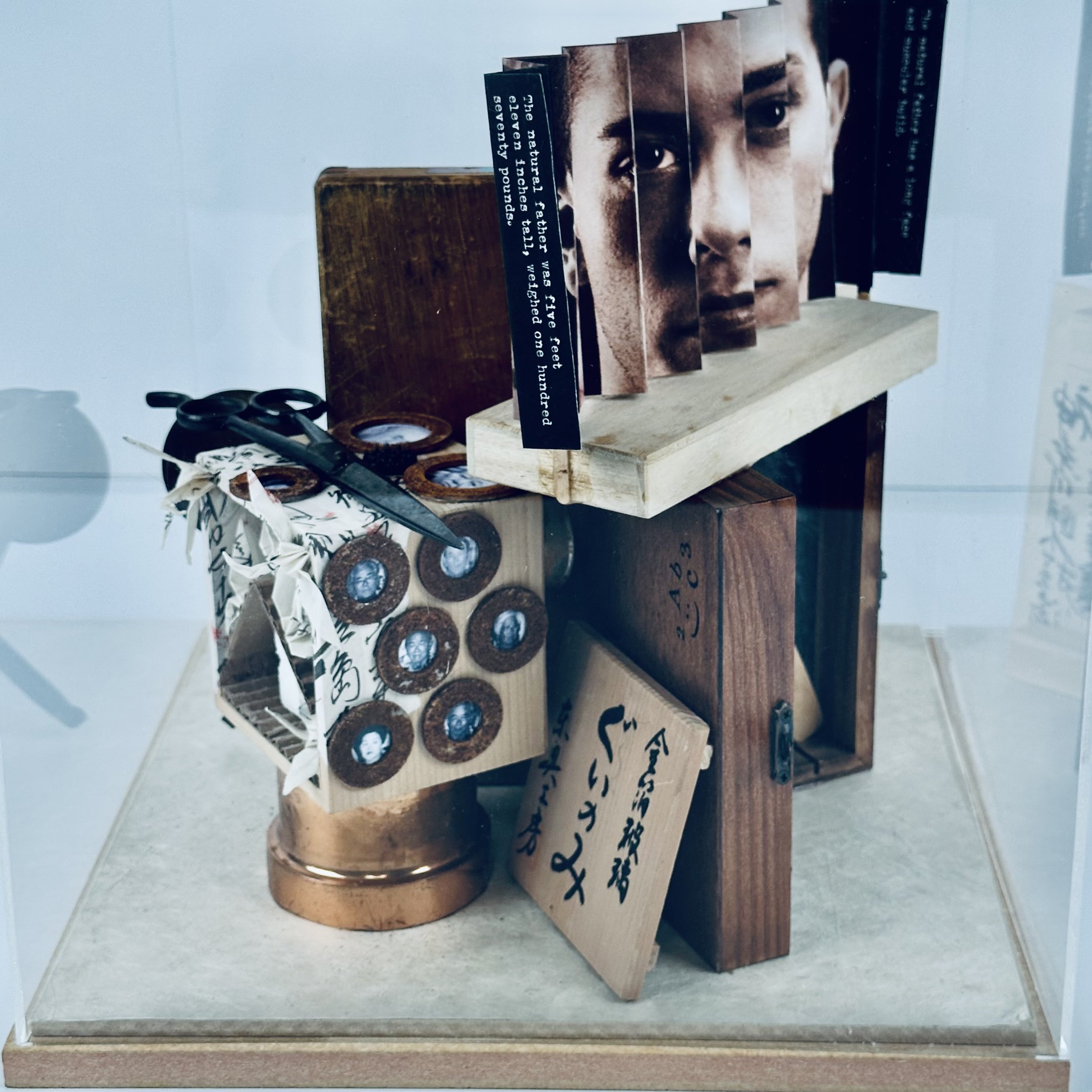
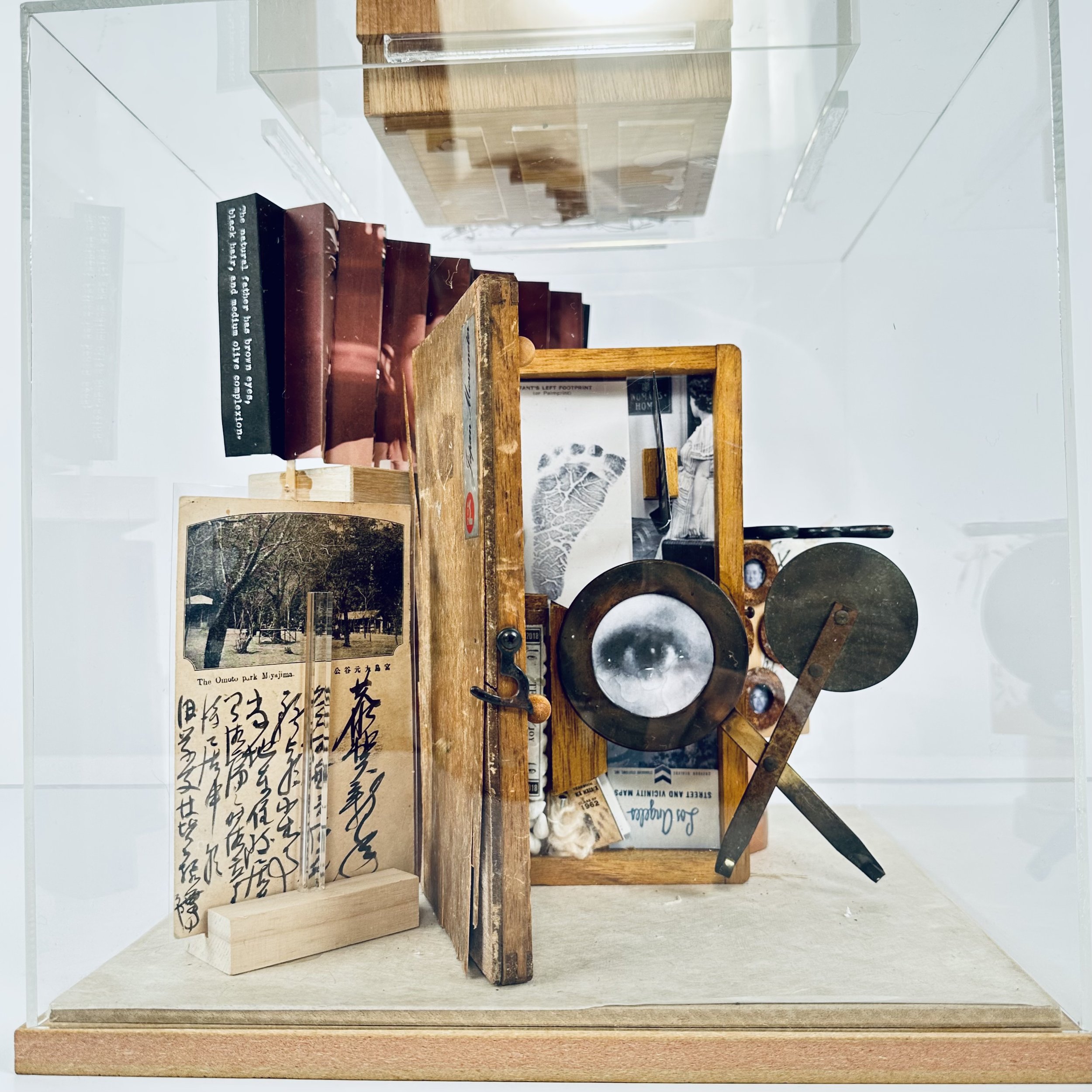
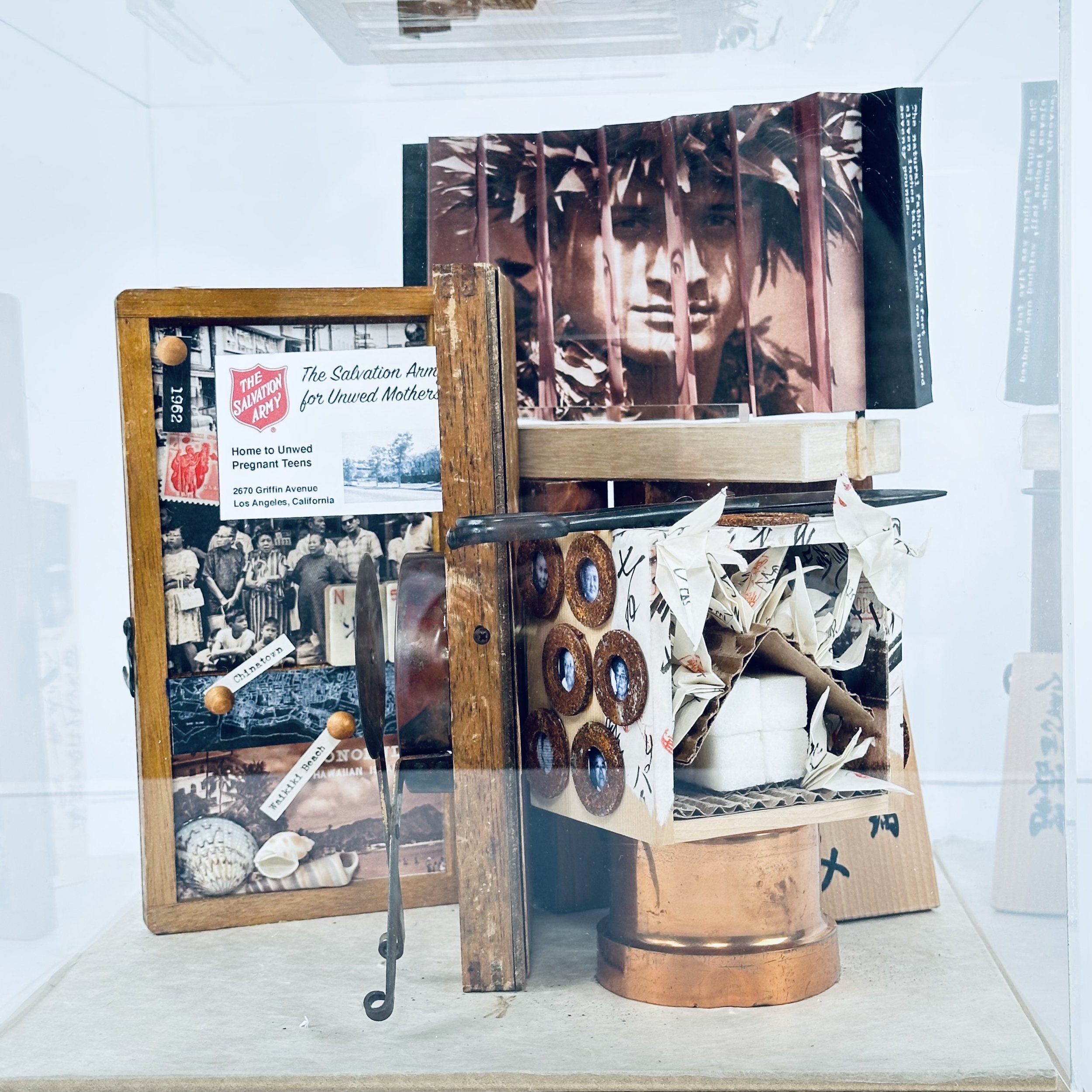
Amy McFarland
Lisa no more
Age: 61
Transcript
On the day that I was born in January 1963, I was put up for adoption through the County of Los Angeles. Because of my closed-state adoption case, obtaining any personal information about my biological parents was off limits to me. I surrendered the fact that I would never be able to know who they are and have any chance of contacting them in the future.
Six years ago, I felt the need to find out what inherited health issues were a part of me. In October, 2018, I purchased a kit through 23&Me. By the end of January, 2019, I was informed through their website that I have two new relatives. This is how I discovered the name of my biological mother for she was on the top of the list as my new relative.
My artwork reflects on various vignettes of new family stories that my biological mother has recently shared with me in addition to my personal feelings about being an adopted person.
I chose to express my story through the sculptural technique called assemblage. Since my stories are from the past, I wanted to use well worn objects that had originally been used for a different useful purpose in another life. A limited color palette was used throughout my vignettes. The sepia-tone boxes inspired my chosen color palette in addition to using simple black and white images.
I found two Japanese tea boxes in a local thrift store. The first larger tea box is sitting on top of the large plexi box. This vignette represents the day that I was born. In the inside of the box you can see that a large egg is sitting on top of a bird nest. The egg is traveling into two separate wire tubes which are loosely strung together. I am leaving one mother and will be joining another mother in a few months time. My short journey is tightly scripted and a transition is about to unfold. On the top of the box is a Japanese architectural element that is traditionally used in Buddhist temples. I have always felt that having 2 sets of parents was a spiritual decision that I had made prior to my birth.
Inside the larger box has 5 vignettes.
The larger diptych case holder: I discovered this wooden case holder in a thrift store. This case holder must have carried different technical tools at one point. On the right panel contains a Salvation Army for unwed mothers’ business card. The Salvation Army for unwed mothers was a “one-stop-shop” facility if you were an underage pregnant woman with no financial resources or family support. There are two vials marked “Tears of Joy” and “Tears of Sorrow” Each vial contains little tears made from clay. I asked my mother what I looked like on the day of my birth. She paused and stated that she did not know because she was crying so much. Her eye is shown in color with little drops of water coming down from her eye. She knitted me some booties and clothes when she was in the facility yet the wool clothing did not travel with me. Her tiny yearbook is present since she had just graduated from high school at the time of conception. The two–5 dice represent the 55th year for our reunion. On the day that I was born, my biological mother named me Lisa. Five months later, my adopted parents changed my name to another less popular name. .
On the left hand side of the diptych, are scenes taken in 1962’s Honolulu. I wanted to imagine myself briefly in Honolulu before she boarded a plane to Los Angeles to give birth to me. As a teenager, my mother talked about hanging out on Waikiki beach and going down to Chinatown with her Chinese father. Her gregarious father liked to gamble so the mahjong tiles represent his activities there in Chinatown. Hawaii became a state in 1959. There is a commemorative stamp that celebrates Hawaii becoming a state.
As you move clockwise, you will see a postcard from Hiroshima, Japan. The date to which this postcard was printed is during the early 1900’s, around the time my great-great grandparents left Hiroshima and moved to Kauai to work on the sugar plantation. I wanted to include an object represented from their original hometown of Hiroshima. My great great grandparents left two young daughters behind in Japan. Their oldest daughter saved up her money and eventually moved to Kauai at age 18. She eventually became my great grandmother.
As you continue to move to the left of the postcard you will see a smaller diptych case holder.
This smaller wooden diptych represents my genetic DNA information. Through stories and new DNA information, I discovered and witnessed that the women on my mother’s side were all very creative. My mother loves to paint and is a great cook. My Japanese grandmother was also very resourceful and enjoyed making ceramics. I started to paint when I was 4 years old. My extreme love of beautiful objects and paintings has pulled me into working in museums. The wooden spoon represents our family’s strong practice of cooking or enjoying eating great food.
Over this smaller wooden diptych sits a lenticular fan-folded object. I used to imagine what my biological father looked like growing up. If you are to the right of the fan-folded object, you will see a picture of a handsome man. If you slowly make your way to the left, another new image of another handsome man appears. This activity also applies on the other side of the lenticular fan-folded object as well. On each end of this fan-folded object are the exact words that the adoption agency described my biological father.
As you continue to the left, you will find a small Japanese tea box. I mentioned before that my great great grandparents arrived from Hiroshima, Japan and settled in Lihui, Kauai around the early 1900’s. Life on Hawaii’s sugar plantations in the 1900’s was characterized by long hours, harsh working conditions and strict control of worker’s lives. My family lived on the plantation in a one room shack with no plumbing, water or no electricity. My great great grandparents eventually gave birth to 13 children. They all shared living inside a very tiny house with no flooring. I wanted to capture the claustrophobic feeling they must have felt. This is a house made from sugar cubes. The roof contains 13 small paper cranes. On the exterior of the box are the faces of the family members who lived in this small house. The paper cranes are made from an old Japanese bookkeeper’s log. The family was so poor that most of the children did not have shoes. They lived in a financially challenged, small house on a sugar plantation in Kauai. My great great grandmother used to cut hair for the people who lived and worked on the plantation. Stories of my great great grandmother inviting a plantation worker into her home at 10 at night to cut his hair was not uncommon. This skill and service allowed a bit of pocket money for the family. In the 1950’s, My grandmother opened up a barber shop in Honolulu. The scissors on the top of the box were manufactured during the 1910’s.
Assemblage is an artistic form that consists of three-dimensional elements that project out from the substrate. Similar to collage, assemblage typically employs unexpected, non traditional materials, which are combined to create a sculptural piece. My objects were found in thrift and crafts stores, my yard, my local 99 cents store, Home Depot, and vintage online websites.
